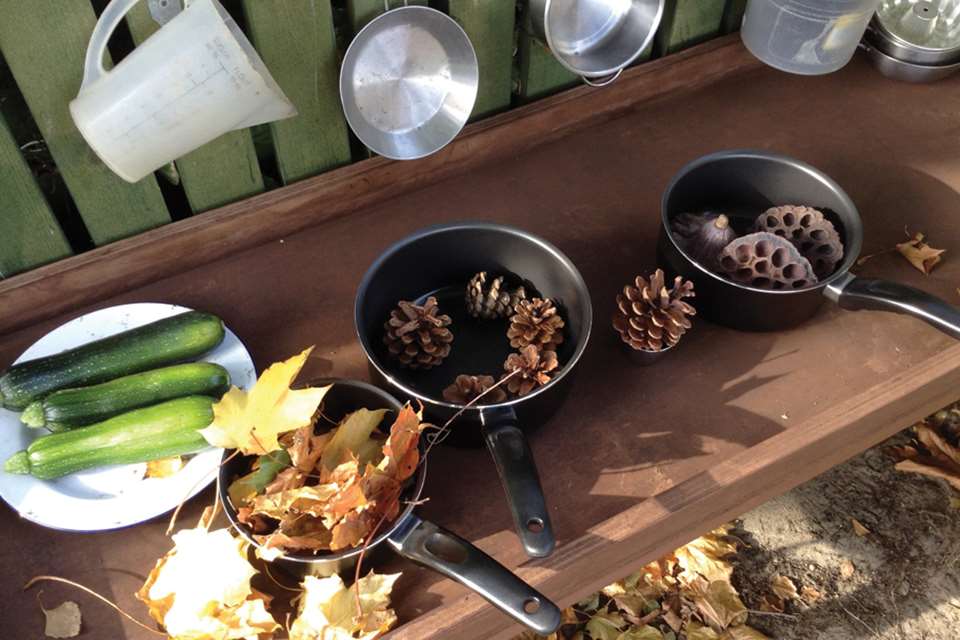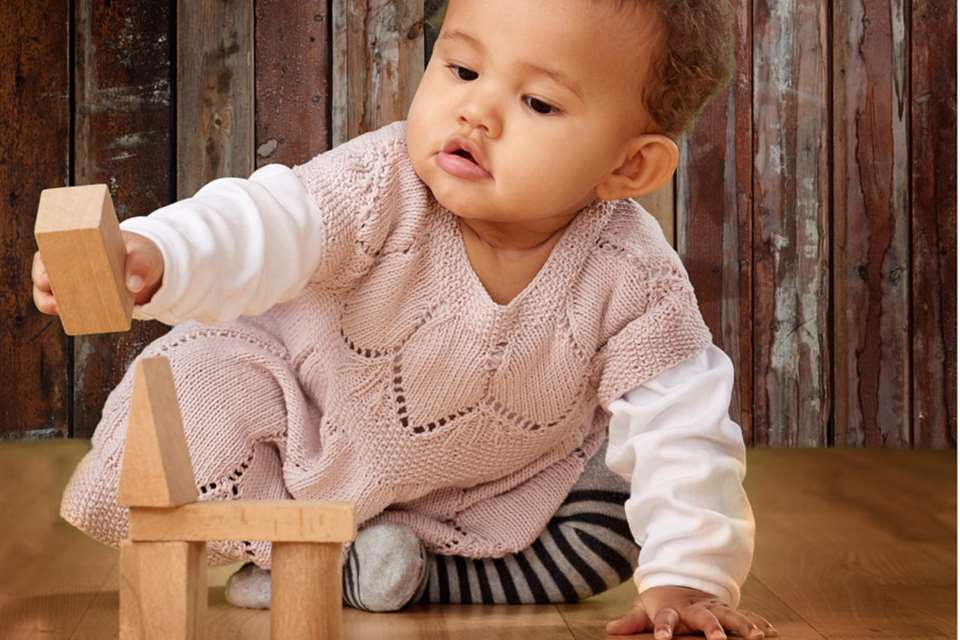Nursery Equipment: Two-Year-Olds - All sorted
Monday, May 16, 2016
Variety is key when it comes to resources for two-year-olds, as is catering for different levels of development and enabling them to express their increasing sociability, Karen Faux reports
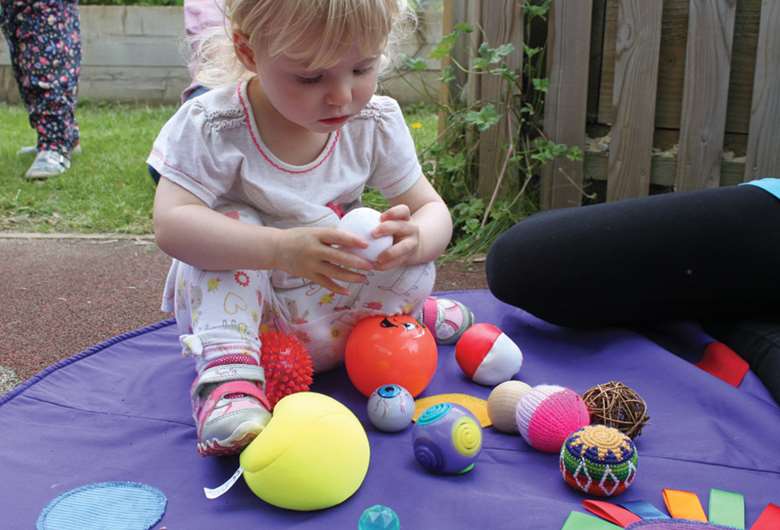
Resources for two-year-olds must be robust, which is another way of saying they must be able to withstand a battering. Children at this age love opening and closing, pushing and pulling, pouring and dropping, and banging and crashing. Repetition is key to learning and everything on offer will be subject to experimentation.
Equipment that is used on a daily basis, and used in a variety of ways, needs to be flexible, durable and safe. It also needs to be easy to clean and dry, as two-year-olds are still using their mouths as a means of exploring.
While nurseries once tended to prioritise providing multiples of identical objects to avoid competition among children for particular things, the emphasis is now on equipping with more variety. Demand is increasing for imaginative resources for twos that are fit for purpose and good value for money.
At House of Rompa day nursery in Wilmslow, Cheshire, manager Des Forrest aims to maximise choice when it comes to what children can access for themselves.
She says, ‘We provide plenty of wooden bricks, of different sizes and shapes, along with Mega Bloks, Stickle Bricks, Mobilo, Popoids, Interstar Construction toys and Crazy Creatures. Other popular items include magnetic blocks, activity cubes and a wide range of small-world resources such as cars, trucks and trains, dinosaurs, bugs and insects, and fantasy figures.’
She stresses the importance of catering for different levels of development at this age, with a mix of toys and resources that are open-ended and provide challenge.
‘These include puppets, dolls, a variety of jigsaws and puzzles, role-play equipment and remote controlled toys like the Bee-Bot range,’ she says. ‘All these come in a variety of sizes to suit all abilities and can be used independently.’
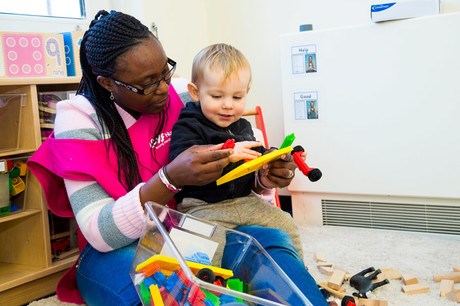
Two-year-olds at the London Early Years Foundation, in New Cross, enjoy playing with Stickle Bricks
HOT SPOTS
You may have noticed that there is a particular area of your provision where two-year-olds like to hang out. This may be because it offers a set of resources that are enjoying a wave of popularity with a group of children. These areas become a focus for activities, sharing and conversation.
Between 24 and 36 months, children become increasingly social and enjoy imitating each other. Exuberant interactions can become infectious, with lots of children wanting to join in, and resources need to accommodate this.
Ms Forrest says, ‘At the moment, the home corner in the tots area is the place to be. The wooden kitchen with all its appliances and utensils, including the washing machine, microwave, settees and dressing-up clothes, family photographs and mirror, make it a hub of activity. It’s a place where conversation flows. Home life is mirrored here and children play at being adults.’
She adds, ‘It’s a fantastic way of introducing new vocabulary. Children also develop patience, understanding, sharing, and have great fun. They can spend hours dressing up, pretending to cook, changing dolls’ nappies, going to work and washing up. The scope is endless.’
It goes without saying that the large cardboard box has lost none of its appeal. David Lord, manager at Kiddi Caru’s Exeter Day Nursery, says, ‘Cardboard boxes are a great example of a resource which children can never resist. Whenever we get a delivery, the boxes go out into the gardens and the creations begin. The children and staff turned a recent box delivery into a huge hedgehog house! Children can enjoy these kinds of resources independently, but it is also great when staff get involved to generate excitement.’
SENSORY EXPLORATION
Touchy-feely materials, and objects that hold light and reflect, fascinate two-year-olds and enable them to make important discoveries about their senses. These resources can also extend vocabulary and be a soothing distraction if nursery life becomes a little stressful. Two-year-olds are often very attached to a particular comforter, such as a soft toy, blanket or square of material, and will be keen to explore tactile experiences, often rubbing material on their faces.
Popular sensory purchases include feely bags, stretchy pom pom balls, textured squares, light balls, mood shapes, and sight and sound tubes. At Ghost Hill Infant and Nursery School in Norwich, children make their own sensory bottles, which are great for discussion.
Head teacher Donna Garratt says, ‘We have also recently purchased story sacks, sensory stacking hoops, tactile balls and hand-eye co-ordination resources that have encouraged the children to use their senses, make discoveries and develop their vocabulary.’
She reports that stacking hoops with different sizes, textures and smells, from Play to Z, have proved popular. ‘They are very robust and two-year-olds love exploring them,’ she says. ‘They also enjoy the story sacks, delving into the unknown and pulling out exciting textures and colours. The sensory pillows are very calming, and the different textures provide comfort and reassurance.’
Magda Zuba, senior nursery manager at Tops Day Nursery, Royal Bournemouth Hospital, favours a calm, uncluttered, and versatile environment for her two-year-olds.
‘We have a forest school here, and equip with natural resources. We bring in a lot of natural collections from outdoors, such as pine cones and twigs.’ She emphasises the importance of a flexible layout indoors. ‘It is important to create cosy spaces for this age group, and floor space that can be easily changed around to reflect children’s different interests and requirements. In the outdoor area, big vehicles, and playthings that they can sit on, are good for challenging play,’ she says.
In terms of smaller items, the nursery equips from a range of suppliers. ‘We like the Basket of Bunnies, from TTS and we’ve made Russian doll, felt finger puppets,’ says Ms Zuba. ‘Small resources are good for helping children to identify patterns and differences. At circle time we use a large puppet, who is a hero figure, to tell stories. At the same time we give children their own little finger puppets to handle and this really enhances their engagement with the story.’
The nursery’s construction area combines loose parts with sand and water play, and has an emphasis on Lego as an open-ended resource. Ms Zuba stresses how important it is to continually audit what is available for children, and ensure equipment is clean and safety-checked.
‘The environment must offer a rich variety of resources at all times,’ she adds. ‘It comes down to staff to ensure it is replenished regularly, so two-year-olds always have plenty of things to explore for themselves.’
CASE STUDY: MON AMI, LINCOLNSHIRE
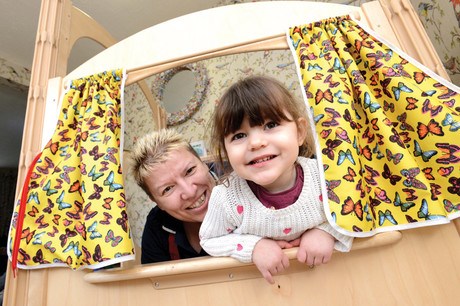
At Mon Ami, a four-strong chain in Lincolnshire, a home-from-home environment ensures children have both busy and quiet times. Senior manager for the group Kristina Johnson says, ‘We have sofas, chairs, dressers and baskets, and have created fireplace areas. But everything is designed to be at child-height level. Role-play units are at the right height, which is really important, as children love opening and closing at this age – in fact they do it a lot!’
Ms Johnson is a big fan of Community Playthings’ furniture. ‘It is great, it’s solid and it lasts,’ she says. ‘We appreciate how the design reflects appropriate heights, and has good joints and angles. The collections of tables and chairs are lovely, and we find it is always worth the money.’
Mon Ami collects small, everyday items that are ideal for open-ended play. ‘We have a bucket full of different boxes, including perfume and jewellery boxes that parents have supplied,’ says Ms Johnson. ‘Children love experimenting with moving objects, fitting things into boxes and working together to problem-solve. This is catered for in our open-ended toys area, where we have loose parts such as car tyres, containers and fabrics. We also have baskets full of everyday wooden objects for sorting and ordering.’
BEST BUYS
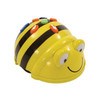 From TTS, Basket of Bunnies (£69.95). Also available is the Super Sphere Sorter (£59.95), which uses a variety of balls to encourage investigation and fine motor skills.
From TTS, Basket of Bunnies (£69.95). Also available is the Super Sphere Sorter (£59.95), which uses a variety of balls to encourage investigation and fine motor skills.
Play to Z’s Stacking Hoops includes Pistachio (£50) and Mini Marmalade (£33). Other best-sellers include Sensory Tales – story sacks with a sensory twist (£78), Shoulder Weights, which are sensory pillows (£40), and the Tactile Ball Collection (£60) – http://playtoz.co.uk.
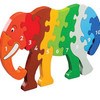 Fine Solutions offers the Solo Bee-Bot (£49.95) – www.finesolutions.co.uk.
Fine Solutions offers the Solo Bee-Bot (£49.95) – www.finesolutions.co.uk.
Early Years Direct’s puzzles and games include the Elephant, Dragon and Dog floor puzzles (£30). And Alphabet Pebbles are in demand from Yellow Door (£24).


